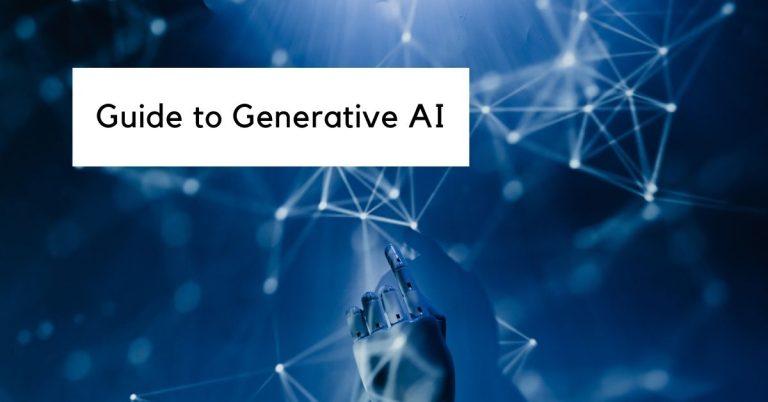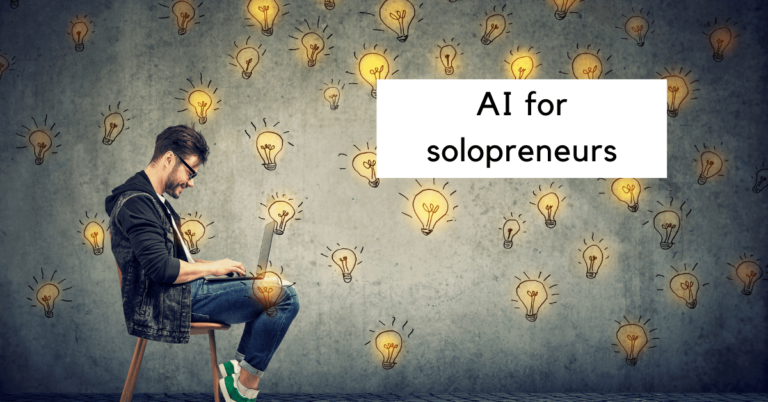Technosolutionism: are we solving the right problems?
When technology is viewed as the catch-all solution, it risks overshadowing deeper, systemic issues that require nuanced approaches.
Remember when smartphones came out and apps were the big thing? Many businesses jumped on the app bandwagon, thinking they needed one to stay competitive. But here’s the kicker: in many cases, a mobile-friendly website would have done the job just fine. This rush to create apps for everything is a prime example of how technology sometimes looks for a problem, rather than solving a real one.
Now, we’re seeing the same thing with generative AI. People think they need to throw genAI at everything, when it’s often not the right solution.
All of this is a classic case of technosolutionism – throwing technology at a problem without considering if it’s really necessary.
What is technosolutionism?

Technosolutionism is the belief that technology can fix every problem we face, from social issues to environmental challenges. This mindset simplifies complex issues into manageable tech-based solutions. It often emphasizes innovations as primary solutions, sometimes overlooking the root causes of issues. Many solutions offered through the lens of technosolutionism may not target the core of societal problems.
“Technological solutionism is an ideology that recasts complex social phenomena like politics, public health, education, and law enforcement as neatly defined problems with definite, computable solutions.”
– Evgeny Morozov
From his book To Save Everything, Click Here: The Folly of Technological Solutionism, Evgeny Morozov argues that this approach leads to a narrow view of problem-solving. Instead of understanding the nuances of a situation, technosolutionism encourages a reliance on algorithms and data-driven solutions.
For example, facial recognition technology was introduced to enhance public safety; however, it has resulted in racial profiling and privacy concerns, particularly affecting marginalized communities.This illustrates how a focus on tech solutions can overlook ethical implications and exacerbate existing inequalities.
Finding the root of the problem first
It’s not hard to see how everyone seems to be jumping on the AI bandwagon these days. The technology promises fast, efficient solutions to complex problems, so, who wouldn’t want that?
According to Katherine Jamul, this mindset had deep roots in Silicon Valley culture, blending revolutionary ideals with entrepreneurial ambition. It’s tempting to believe that the latest app or AI model can magically solve societal challenges. After all, technology has transformed so many aspects of our lives already.
However, experts warn that this “California Mentality” of seeing tech as the answer to everything can lead us astray. Sometimes, the real solution isn’t flashy or high-tech. For instance, while AI can help predict weather patterns or optimize traffic flow, it doesn’t address the fundamental issues like climate change or urban planning that create these problems in the first place. This focus on immediate technological fixes often overlooks the complexities involved in human experiences and social structures.
Downsides of technosolutionism
While technology offers many benefits, there are notable downsides to technosolutionism. These drawbacks highlight the need for a more nuanced approach to addressing complex societal issues.
Oversimplification
Technosolutionism often reduces complex problems to simple, technical fixes. This oversimplification can lead to solutions that miss the root causes of issues. For example, using AI-driven chatbots to address mental health concerns might sound efficient. However, this approach probably overlooks the value of human empathy, personalized care, and the complexity of each individual’s experience.
Relying too much on AI forces us to ignore the importance of professional therapists and the integration of community support systems, both of which are crucial for genuinely effective mental health care. Your focus becomes narrow, ignoring the intricacies involved in systemic problems.
Neglect of human factors
Most technological solutions focus on efficiency rather than human needs. This can lead to neglect in terms of reduced user satisfaction and engagement. For instance, an interface for software that is not developed based on user feedback will frustrate users, making the solution a failure. It requires learning user behavior and context to solve real problems.
Dependency risks
As you increasingly rely on technology, the risk of becoming dependent on these solutions grows. The more dependent you become on technology, the bigger the potential to become a hostage to these solutions. This also can make you vulnerable in particular when a solution produces an undesirable outcome: failure or compromise of the technology.
Think about cities relying on smart grid technologies for energy distribution. When these systems break due to cyber attacks, natural disasters, or any other reason, communities may wake up to no power and vital services. Dependency on technology may make people incapable of responding to crises or disruptions, hence the need for backup systems and conventional methods.
Inequality issues
Technosolutionism could actually perpetuate any pre-existing inequalities. When solutions are designed without considering diverse populations, marginalized groups may be left behind. For example, educational websites like Khan Academy provide valuable educational resources, but they require internet access and devices–resources that many lower-income families lack. This perpetuates the digital divide instead of addressing systemic barriers.
Short-term focus
The emphasis on quick technological ‘silver bullets’ often leads to a focus on short-term results. Sustainable solutions require a long-term approach and investment. If technology companies focus more on short-term gains, they might ignore one of the essential continuing support and infrastructure required for lasting change. Such an approach might ultimately undermine the initial benefits developed by technology.
Privacy concerns
Implementing technology to solve problems often raises significant privacy issues. The collection and utilization of personal data can jeopardize individual privacy and trust. For example, health apps that track user data for better health outcomes may inadvertently expose sensitive information.
Health apps like MyFitnessPal track user data for better health outcomes but can inadvertently expose sensitive information if not properly secured. Users may feel uneasy about sharing their health metrics if they believe their data could be misused or sold without their consent. Addressing these concerns is essential to maintain user confidence in technological solutions.
Potential for failure
Tech projects can fail for various reasons—poor planning, lack of user engagement, or unforeseen challenges. Not all technology solutions achieve their intended goals. The reliance on a tech-first approach can lead to significant failures, impacting both projects and morale.
Take the case of Healthcare.gov, which launched in 2013 but faced numerous software and performance issues due to insufficient testing and rushed deployment. The website experienced frequent crashes and slow performance, preventing users from signing up for health insurance effectively. When a solution falters like this, it can lead to significant repercussions, including loss of trust in new implementations. Identifying the right technological fit for your needs is essential to avoid such pitfalls.
Failure to scale
Not all technological solutions can scale effectively to address broader issues. A tool that works well in one setting may struggle to adapt to different environments or larger populations. For example, a localized app addressing community needs might fail when applied at a national level. Success requires adaptability and a comprehensive understanding of various contexts.
Why tech first isn’t always right

Relying solely on technology to solve problems can lead to several significant issues. Understanding these drawbacks is crucial for making informed decisions about solutions that genuinely address core challenges.
- Companies often market AI tools as must-haves, even when they don’t address a genuine need.
- Many tech solutions are designed without considering how people actually use them, leading to frustration.
- Investing in unnecessary technology can waste time and money that could be better spent elsewhere.
Remember the hype around Flash plugins in the early 2000s? They promised a new wave of interactive content but often resulted in poor usability. Many websites became cluttered with flashy animations that distracted rather than engaged users. This serves as a reminder that adopting new technology for its own sake rarely yields positive results.
A recent example is LinkedIn’s attempt to introduce AI-generated follow-up questions on posts. These questions were often generic and unhelpful, leading to user frustration rather than enhancing engagement.
These instances highlight a crucial point: technology should serve people, not the other way around. When companies prioritize shiny new tools over genuine user experience, they risk alienating their audience.
Unnecessary push for AI tools
The rapid emergence of AI tools has sparked excitement, but many of these innovations are more hype than help. This high usage can lead to several negative consequences that are often overlooked. Here are a few key issues associated with the over-reliance on AI tools:
- Overusing AI can diminish our ability to think critically. For instance, when students depend on AI for writing essays or solving problems, they may not engage deeply with the material. According to a study by Pew Research, “The tendency among users to overlook or minimize ethical challenges is concerning,” highlighting how over-reliance can stifle independent thought.
- There’s a tendency for users to overestimate the capabilities of AI tools, assuming they are flawless when they are not. This can lead to serious mistakes, especially when people rely on AI for critical tasks like legal advice or medical information.
- AI tools are trained on existing data, which can contain biases. This means that the outputs may reflect and perpetuate these biases, leading to skewed perspectives and decisions. For example, if an AI tool is used for hiring recommendations, it might favor candidates from specific demographics based on historical data, thus reinforcing inequality.
- As AI tools become more capable, there’s a real fear of job loss across various sectors. Many tasks that once required human input are now being automated, which could lead to a future where fewer entry-level positions exist for new graduates. This raises concerns about how upcoming professionals will gain necessary experience if the jobs that traditionally provided it disappear.
“If mediocre, auto-generated reports are passing muster, is anyone actually reading them?”
Although artificial intelligence tools present good convenience and efficiency, this extensive use comes with significant drawbacks; hence, we have been compelled to address them. Indeed, the application of all these technologies needs to be appropriately balanced with critical thinking in order to promote our betterment as intellectuals and experts.
Examples of technology adding value
Technology can address significant challenges across various sectors. It enhances efficiency, improves accessibility, and contributes to sustainability. The following points highlight how technology serves as a solution in specific areas.
Efficiency improvement
Automation tools reduce manual work, allowing companies to focus on strategy. For example, the UiPath robotic process automation software automates the mundane, such as repeated data entry or payroll processing, reducing errors and speeding up activities. As Ermin System says, this allows employees to focus on more valuable work, improving performance in the long term. Real-time collaboration tools make decisions better, and a data analytics platform helps to pinpoint flow bottlenecks so they can be optimized.
Predictive analytics
Predictive analytics uses data, statistical algorithms, and machine learning to forecast future outcomes. This approach allows you to make informed decisions based on data trends. In retail, for example, businesses can analyze shopping patterns to predict inventory needs. This leads to optimized stock levels and reducing customer satisfaction.
An example is IBM’s Watsonx platform, which helps analyze trends to anticipate customer behavior and inventory demands.
In healthcare, predictive analytics identifies at-risk patients and tailors interventions, thereby improving outcomes and efficiency of resource utilization.
Accessibility

Technology can eliminate barriers, enhancing accessibility for individuals with disabilities. Screen readers and voice recognition software make digital content available to those with visual impairments.
Software like JAWS (Job Access With Speech) is a screen reader that enables visually impaired users to navigate digital content effectively. Additionally, web accessibility standards ensure that websites are usable for everyone, fostering an inclusive environment.
In education, online learning platforms offer customized experiences. This flexibility allows learners with different needs to access quality education from anywhere.
Cost reduction

Adopting technology can result in substantial cost savings for businesses. Cloud computing, for example, reduces the need for extensive on-site infrastructure, lowering maintenance and operational costs. Cloud services like Microsoft Azure reduce the need for extensive on-site infrastructure, lowering maintenance costs.
Open-source software and platforms provide alternatives to expensive proprietary solutions. This accessibility arms organizations with the tools needed to innovate without breaking the bank.
Automation also plays a crucial role in driving down labor costs. By reallocating human resources to higher-value tasks, you can enhance productivity while managing expenses.
Sustainability initiatives

Technology plays a pivotal role in advancing sustainability initiatives. Renewable energy solutions, such as solar and wind, are increasingly efficient and cost-effective.
Smart grid technology optimizes energy distribution, reducing waste. Real-time monitoring can help consumers and businesses lower their carbon footprint through informed usage decisions.
Solar panels and wind turbines are becoming more efficient and cost-effective renewable energy solutions. Smart grid technology optimizes energy distribution, reducing waste and helping consumers make informed energy usage decisions.
Furthermore, precision agriculture utilizes technology to enhance crop yields while minimizing resource use. This approach supports food security and sustainability goals without damaging the environment.
Scalability
Deploying technology enables businesses to scale operations efficiently. Cloud services allow you to expand resources easily, adapting to demand fluctuations without heavy upfront investments.
For example, Software as a Service (SaaS) models provide access to essential tools without requiring substantial hardware purchases. This flexibility is crucial for startups and growing organizations.
Additionally, e-commerce platforms facilitate rapid market expansion. You can reach global audiences with minimal investment, driving growth and enhancing competitiveness.
Final thoughts
Remember, not every problem requires a high-tech solution. It’s easy to get caught up in the excitement of new innovations and believe they hold all the answers.
However, real solutions often require more than just algorithms and data; they need a deeper understanding of human experiences and social dynamics.
Any of the solutions mentioned in the previous section could easily go wrong without a good understanding of the problem space and user needs.
Sometimes, a simple fix or a change in process can be more effective than throwing Al at the issue. The goal is to find the most efficient and practical solution, whether it’s cutting-edge tech or a tried-and-true method.







